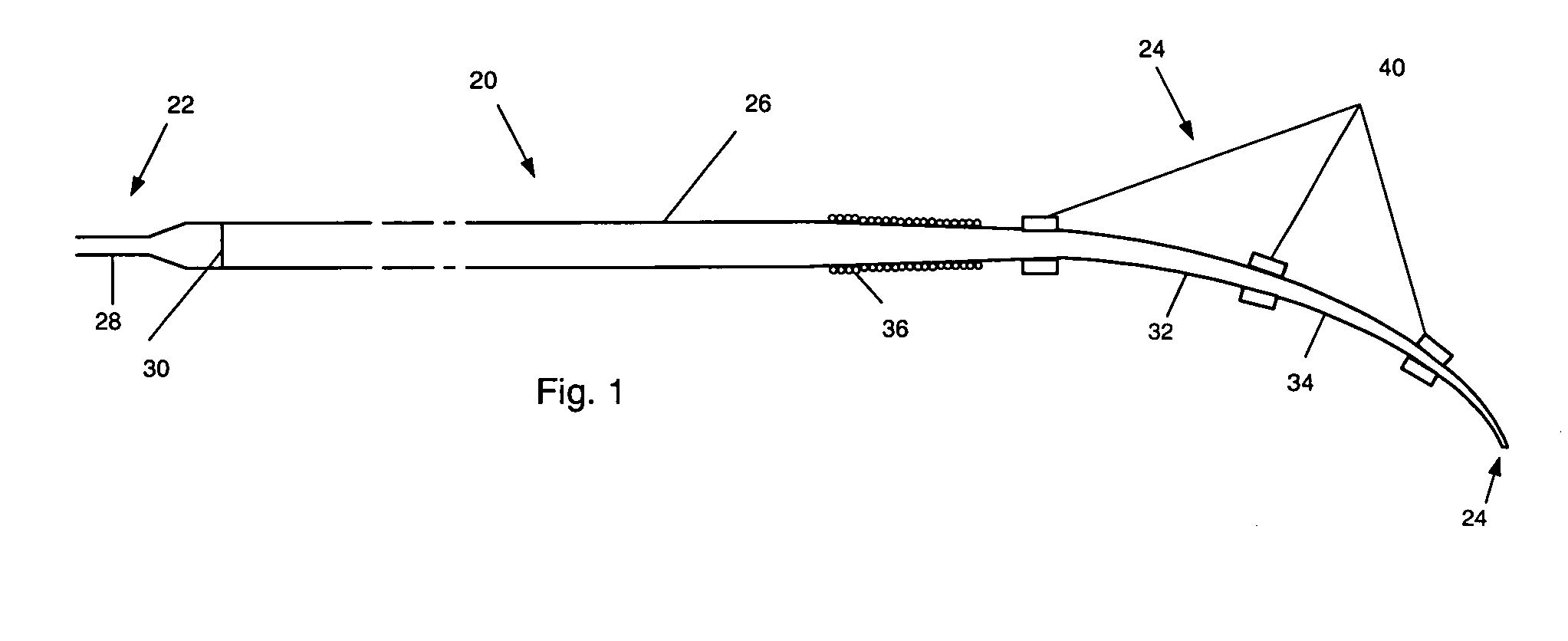Guide wire with magnetically adjustable bent tip and method for using the same
a technology of guide wires and bent tips, which is applied in the field of guide wires, can solve the problems of frustrating the physician, increasing the difficulty of controlling guide wires, and disadvantages of pre-shaped bends, and achieves the effect of increasing the curvature of the distal tip
- Summary
- Abstract
- Description
- Claims
- Application Information
AI Technical Summary
Benefits of technology
Problems solved by technology
Method used
Image
Examples
Embodiment Construction
[0014] A first preferred embodiment of a magnetically navigable medical guide wire in accordance with the principles of this invention is indicated generally as 20 in FIG. 1. The guide wire 20 has a proximal end 22 and a distal end 24 and comprises a flexible core wire 26 extending from the proximal end substantially to the distal end. In the first preferred embodiment, the core wire 26 is between about 40 cm and about 350 cm, and tapers from a diameter of about 0.3 mm at the proximal end to about 0.05 mm at the distal end. In the preferred embodiment the bend 32 forms a bent distal section 34 that bends at an angle of between about 15 and about 90 degrees, and more preferably between about 20 and about 60 degrees.
[0015] The core wire 26 can be made of Nitinol, stainless steel or other suitable material, and may comprise a tapered cross-section that provides for increased flexibility near the tip of the guide wire. Additionally, the core wire can have a flat, malleable section that...
PUM
 Login to View More
Login to View More Abstract
Description
Claims
Application Information
 Login to View More
Login to View More - R&D
- Intellectual Property
- Life Sciences
- Materials
- Tech Scout
- Unparalleled Data Quality
- Higher Quality Content
- 60% Fewer Hallucinations
Browse by: Latest US Patents, China's latest patents, Technical Efficacy Thesaurus, Application Domain, Technology Topic, Popular Technical Reports.
© 2025 PatSnap. All rights reserved.Legal|Privacy policy|Modern Slavery Act Transparency Statement|Sitemap|About US| Contact US: help@patsnap.com



